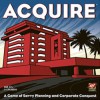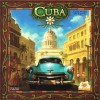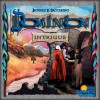
Sketel
gamer level 2
380 xp
380 xp
followers
14
14
Use my invite URL to register (this will give me kudos)
https://boardgaming.com/register/?invited_by=sketel
profile badges
...
...
...
...
recent achievements

I Got What I Wanted
Add a game to your Owned list that was previously in your Wish list.
Add a game to your Owned list that was previously in your Wish list.

My First Heart
Show your loyalty for a game by clicking the "Heart" button on a game page.
Show your loyalty for a game by clicking the "Heart" button on a game page.

Noble
Gain 2 followers
Gain 2 followers

Gamer - Level 2
Earn Gamer XP to level up!
Earn Gamer XP to level up!
Player Stats
Critic (lvl 1)
150 xp
150 xp
Explorer (lvl 0)
78 xp
78 xp
Professor (lvl 0)
55 xp
55 xp
Reporter (lvl 0)
20 xp
20 xp
About Me
Hello! I love light strategy games, ranging from the simple games like Ticket To Ride, to games more on the side of light wargame. I enjoy discussing games, trying new games, designing games and I'm also interested in the potential for interesting light strategy games in education.
























Puerto Rico
Puerto Rico is a fairly ugly game in a fairly ugly box, reminiscent of old Amstrad game titles. Thankfully, it is a joy to play – a true king of light strategy games. In Puerto Rico, the players assume the roles of landowners on the recently settled island of Puerto Rico, and are seeking prestige and glory by developing the city of San Juan and shipping goods back to Europe. They will do this by inviting various artisans to the island – the mayor, the captain, the settler, the builder, the prospector, the craftsman and the trader.
Each player has their own board, with a representation of the things they own on the island. The area at the top of the board shows the buildings the player has built, while the area at the bottom of the board is the player’s plantations – fields which produce the game’s 5 goods: corn, indigo, sugar, tobacco and coffee. At the top right of each player’s board is a compass rose, which the game suggests players display their assets on (money, goods, victory points), though it doesn’t really serve much purpose. This board is pretty. The other cards, less so. The wooden components are nice – each good is represented by painted wooden ‘barrels’, which is very pleasing. The ship cards (used to ship workers to the island and transport goods from the island) are pretty dull looking, and the buildings have no visual representation at all – they are simply chits with the words like ‘Factory’ and ‘Office’ on them. There is a market board too, which stores the money and buildings the players can access.
Really though, it is the gameplay that has made Puerto Rico one of the most acclaimed games of all time. In each round, one player is the ‘governor’, meaning they take action first. Each of the 7 artisans begin in the middle of the table in the form of ‘role cards’. The governor takes a role card, essentially meaning he or she has invited that specialist onto the island. This now means that, in clockwise order, all players can take the action allowed by that card. For instance, if a player selects the builder card, all players get the opportunity to build a new building. The player who selected the card also gets an extra, related bonus for choosing it. To use the builder example again, the player who actually selects that card gets a discount on buildings for that turn.
After that, the next player chooses a role from the remaining cards and everyone takes that action. This continues until the turn arrives back at the governor, at which point there will be 3 roles that have not been chosen (the prospector role is duplicated when there are more than 4 players). The governor then places a coin on each unused role card as an added incentive to choose that card next time round. The less popular cards can pile up a small fortune of coins before someone decides to take them. The roles are returned to the middle of the table, the governor card then passes on, and the next round begins.
To explain all the roles would be boring and long, but to really understand the game, you need to know what each role does – everything that is done in the game relates to one of the roles. An overview however, would be something like: the settler grows plantations which produce goods to be harvested by the craftsmen. They won’t produce goods without the right buildings built by the builder. Building requires money, which is acquired through the skills of the trader, who sells goods and the prospector, who guarantees a small cash return. Buildings and plantations are worth nothing without workers, who are managed by the mayor. Goods can then be shipped back to Europe with the assistance of the captain in exchange for victory points. All goods are worth equal victory points, but trade for different values in the trader phase, and conversely some are easier to produce than others.
As you can see, every role is linked to every other role, and the design of this is practically perfect. The captain phase, in fact, is like a mini-game in itself, as players attempt to load all their goods and limit opponent’s options.
This is essentially the spirit of Puerto Rico – you are attempting to study the current situations of all of your opponents and select a role which will benefit you without benefiting your opponents too much. Taking some roles can be risky – if you select the craftsman to harvest goods, is the next player from you going to get a more lucrative harvest and then select trader and capitalise on the harvest you’ve just given them?
The game has a perfect blend of strategy and tactics. There are two main ways to gain victory points: shipping goods and buildings, which each have a victory point value. Which will you choose? To build a great city, or become a great farmer? What about a blend of the two? If you choose to farm the land, will you specialise in a couple of goods, or try to get a wide variety? If you choose to build many buildings, which ones will you choose to benefit you the most, as each building has unique abilities? The other main tactical point is, if you think you are ahead, you could try to bring the game to a speedy close by either filling your city or using up the last of the game’s worker supply.
The tactical part of the game, however, comes from the timing of each role. Can you spot a shrewd move which will allow you to ship all of your goods, but allow your opponent’s produce to perish? Are you the only person who can exploit the trading house to its maximum potential this turn? Do you really need to take this role now, or could you choose a different one because you know one of your opponents will probably choose this role next anyway? Do you leave a role until next turn because it will hopefully have acquired some money on it? There are many interesting decisions to be made throughout the game, and every one has an instant effect on all the players.
My only real criticism of the game is that in a group of varied skill and experience levels, the winner will almost without fail be the player sitting to the left of the least experienced player – the less experienced player probably won’t be thinking ahead, and the more experienced player will be able to take advantage of every move made by the newbie. The game truly does encourage strategic thought, and there is only one random element in the entire game – the plantations that are available during each settler phase, but even then, if the plantation tiles aren’t in your favour, you can opt not to play that phase. You will always be comparing the situation of you and your opponents, but because you cannot see your opponents victory point chips (and because some buildings allow bonus victory points at the end of the game on top of the normal points for buildings), you never know who has actually won until the end.
Puerto Rico is a truly excellent game, a modern classic. If this game gets reprinted with more attractive graphics (and possibly a few minor adjustments to building effects and costs), I would honestly buy it again. The game lasts just the right length of time, and, while there is no actual negotiation, the level between the roles and players is huge. I imagine myself playing Puerto Rico in many years to come.